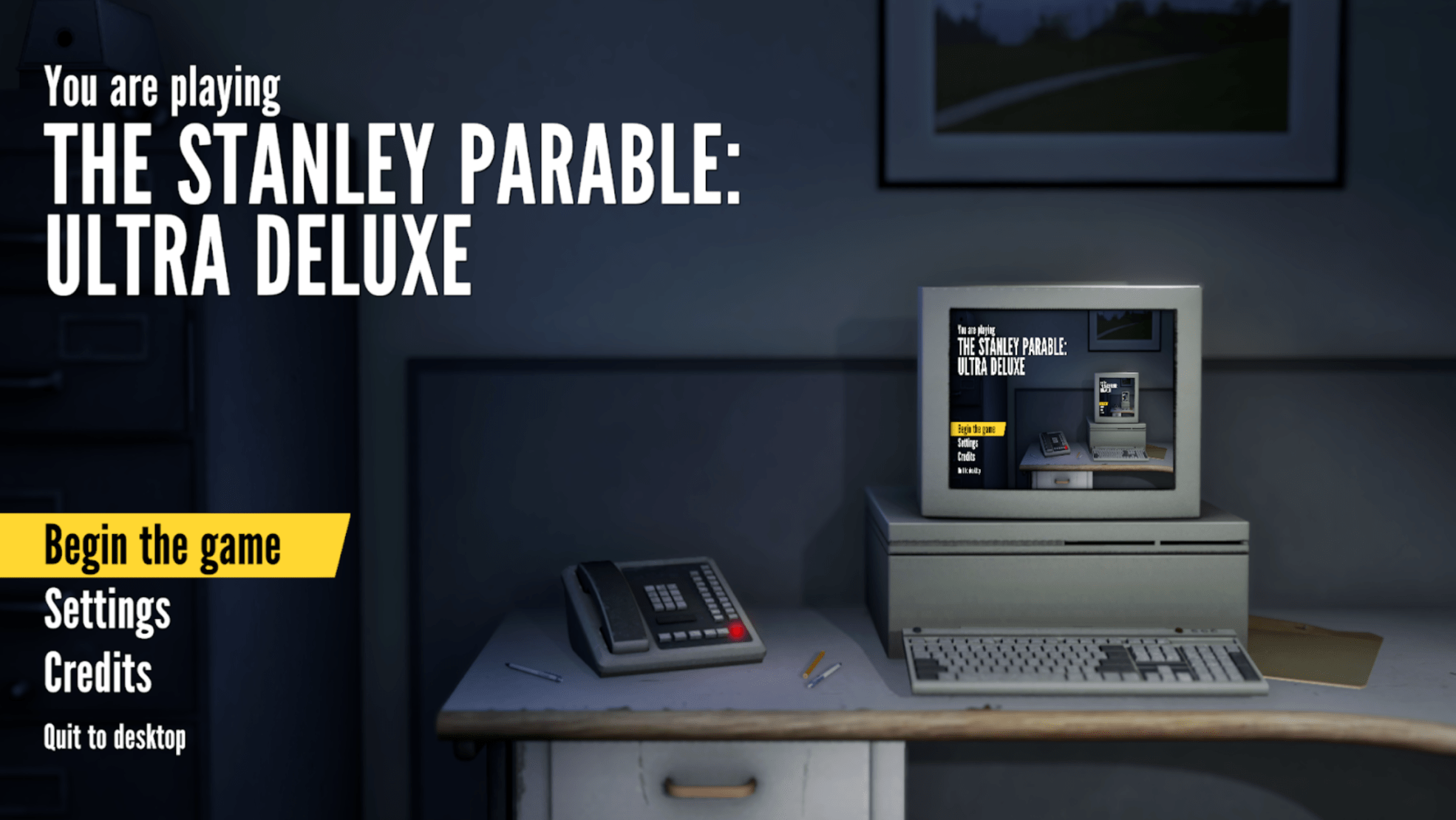[Spoilers Ahead!!! Please do not read unless you have played the Stanley Parable]
–
–
–
–
–
–
The Stanley Parable: Ultra Deluxe Edition is the expanded version of the well-regarded game of the same name. The game was designed and developed by Davey Wreden and William Pugh and I played it on PC. The target audience is anyone who enjoys story-based games, and really anyone who has heard from friends about how unconventional this game is (that’s me).
The game starts with the narrator giving the premise of the game – Stanley is a full-time employee who has a boring job pressing buttons on his computer and who one day realizes that all his coworkers have vanished – and then transitions to the player controlling Stanley. The objective of the game is simply to find out what has happened to all the coworkers by following the instructions given by the narrator, or at least that’s what it seems like in the beginning. The moving mechanics are also relatively simple – the usual WASD keys for walking around and the mouse for view control as well as interacting with the environment (limited objects to interact with). The game has very interesting designs of procedures that sets it apart from other story-based games. In the beginning of the game, the player is instructed by the narrator on where to go, but the narrator rarely dictates the player’s actions because the instruction is always given by speech and the player often has some choices they can make about what to do. What the player doesn’t know at the start is that each path they take will lead to the game “restarting,” and there are an unknown (at least to me) number of ways that each play can end. Each time the game restarts, the player may try different actions from the last play to discover additional things. During the 2 hours I played this game, I saw around 6-7 different endings and none of them led to the initial objective of the game. Also, by this point, because of all the interesting twists and turns I encountered in the game by exploring different paths, I became invested in simply discovering all the paths I possibly could. As a result, my main objective shifted towards discovering all the fun stuff this game has to offer. In doing so, the game successfully provides the player both the Narrative type of fun (as promised because of the game’s genre) and the Discovery type of fun.
Something that completely surprised me was that the game also strangely provides the Fellowship type of fun despite it being a single-player story-based game. Although the narrator isn’t a real human talking to me live, I feel that I have built fellowship with him throughout the game. Contrary to typical games that have a narrator who simply gives instructions, the game doesn’t have strict rules requiring players to follow instructions in order to proceed. In fact, taking actions against what the narrator says is part of the gameplay and that is quite a mind-blowing design. The narrator plays a somewhat mysterious role – he’s both like a friend and like an enemy – and acts very human (gets frustrated with you and with himself about how the story is progressing). This is the most unique part of the game that makes the experience very enjoyable even though I still have no idea how to actually win the game.
It’s difficult to say what could make this game better without having seen the game through to the end (or is there actually no end?). One minor issue I had was that I went down a path that led to a museum space showing artifacts from the game development process only on my second play. I thought all of that was too early to be exposed to because the museum exhibits showcased objects or designs for the other endings that I had no knowledge of and I would rather encounter those things through gameplay first.
[The “ESCAPE” path was the one that led me to the museum that I felt happened too early]




